I have below information like gravity, thrust, my initial x, y and initial velocities. How do I calculate
1. Time to reach the top of the projectile 2. Horizontal displacement during that time
"grav": 0.7,
"thrust": 10.5,
"me": {
"x": 0,
"y": 180,
"vx": 4,
"vy": 0
}
So far I have tried this formula to calculate vertical displacement (reference here)
For Horizontal displacement, I used t*vx0;
